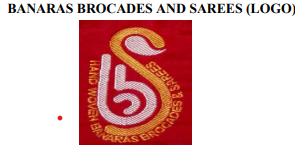INTRODUCTION TO GEOGRAPHICAL INDICATION
Intellectual Property (IP) encompasses broad range of intangible creations, including like literary works, artistic works, inventions, industrial designs, symbols, names, images etc. granting an individual or business, claiming to be the owner/ proprietor the exclusive legal rights to use and benefit from their intellectual contributions. Since becoming the member of World Trade Organisation (WTO) in 1995, India has been required to integrate certain IP protections into its national laws.
A significant aspect of IP that has gained prominence under the adoption of the Agreement on Trade- Related Aspects of Intellectual Property Rights (TRIPS Agreement) in 1994, is the concept of Geographical Indications (GI’s) that has attracted increased attention from indigenous producers as well as economists around the world. As per Article 22.1 of the TRIPS Agreement, GI is defined as –
“Geographical indications are, for the purposes of this Agreement, indications which identify a good as originating in the territory of a member, or a region or locality in that territory, where a given quality, reputation or other characteristic of the good is essentially attributable to its geographical origin.”
INDIA’S LEGISLATION
In India, the Parliament had passed the Geographical Indications of Goods (Registration and Protection) Act,1999 that came into force with effect from 15th September,2003 with a view to promote goods with indigenous production value by protecting the interests of producers through a rule-based system that is open, fair and provides for an enforcement mechanism. In 2002, the Central Government, established the ‘Geographical Indication Registry’ located in Chennai for all jurisdictions to handle the registration and administration of Geographical Indications.
Registration and Duration
As per S. 2 (1) (e) of Geographical Indication of Goods Act, 1999 it is stated that GI identifies “such goods as agricultural goods, natural goods or manufactured goods as originating, or manufactured in the territory of a country, or a region or locality in that territory, where a given quality, reputation or other characteristic of such goods is essentially attributable to its geographical origin”. Though GI registration is not compulsory, S. 20 (1) of the Geographical Indication of Goods Act, 1999 clarifies that no person shall be entitled to start proceedings to prevent, recover the damages for infringement for an Unregistered Geographical Indication.
The registration of a geographical indication is valid for a period of 10 years and can be renewed from time to time for further period of 10 years each.
BANARASI SAREE CASE
The journey of GI status in India keeps progressing with the involvement of traditionally remarkable goods such as Darjeeling Tea, Kanjivaram Silk Sarees, Mysore Pak, a well-known sweet dish from South India, Karnataka, Similipal Kai Chutney, which originated from a region in Odisha known as Similpal, along with many other range of goods, each with a distinct traditional and economic importance.

On 29th April, 2011 Application for registration Banarasi Brocade was granted GI by the Registry under S. 16(1) of the Geographical Indication of Goods Act, 1999. Originating from Banaras, Uttar Pradesh, one of the rich weaving craft centres of India, these sarees are famous for their unique silk brocades with intricate zari work. There were 9 organizations that filed the application for geographical indication for Banarasi Sarees:
- Banaras Bunkar Samiti
- Human Welfare Association
- Joint Director Industries (Eastern Zone)
- Uttar Pradesh Handloom Fabrics Mktg. Co.op Federation ltd.
- Eastern U.P Exporters Association
- Banarasi Vastra Udyog Sangh
- Director of Handlooms & Textiles U.P
- Banaras Hath kargha vikas samiti Ltd
These sarees date back to the Mughal Era near to 14th century, when weaving of brocade using gold and silver threads was the speciality of Banaras. They are considered to be one of the finest sarees in India with the opulent embroidery teamed with silver gold brocade and fine silk. The intricacies from the Mughal Era have its design with the intertwining foliate and floral motifs which form the characteristic feature of these saris.
Banarasi sarees feature luxurious brocade patterns with elaborate designs, including varieties like (a) Banaras Silk Jamdanis, (b) Banaras Jangla Saree, (c) Banaras Jamwar Tanchoi Saree, (d) Banaras Tissue Saree, (e) Banaras Cutwork Saree, and (f) Banaras Butidaar Saree. The GI tag helps preserve the authenticity and quality of these exquisite textiles, ensuring that only sarees produced in Varanasi and meeting specific traditional standards can be marketed under this esteemed name.
GI LOGO AND SPECIFICATIONS
GI- LOGO
The GI certificate for Banarasi Silk Products which has been granted for a period of 10 years and extendable, classifies the goods under Classes 23,24,25,26 namely silk embroidery, textile goods, silk brocades, silk saree and dress material. This certification specifies that henceforth sarees produced only in-
- Varanasi (formerly Banaras)
- Azamgarh
- Chandauli
- Jaunpur
- Mirzapur, and
- Sant Ravi Das Nagar (Bhadohi)
will be considered Banarasi Sarees. The most important aspect of the GI certification is that it ensures that any brocade or saree made outside the six identified districts in Uttar Pradesh, India cannot legally be sold as Banarasi saree and Brocade.
IMPORTANCE OF GI TAG TO BANARASI SAREE
The GI tag plays a crucial role in safeguarding the authenticity and heritage of Banarasi sarees. It ensures that only sarees produced in the designated regions of Uttar Pradesh can be sold under the esteemed Banarasi name. The need of GI has become apparent due to the production of counterfeit sarees produced artificially or cheaply manufactured from other regions to resemble the original look, undermining the reputation and value of the authentic handicraft by flooding the market with lower price limitations.
The achievement of GI tag is designed to benefit not only the thousands of handloom weavers but also consumers and exporters by establishing the Banarasi saree as a distinguished symbol of fine Indian craftsmanship on the international stage. This tag ensures consistent high quality, helping to distinguish authentic Banarasi sarees from contemporary imitations. By safeguarding the unique characteristics of this indigenous handicraft, the GI tag protects the traditional industry from counterfeit products, thus preserving the integrity and heritage of the Banarasi weave while promoting its global recognition and appreciation.
CONCLUSION
The Geographical Indication (GI) tag for Banarasi Sarees represents an initiative in protection and promotion of one of the esteemed traditional textile traditions in India, The tag safeguards and encourages the growth of cultural products rooted in our heritage and craftsmanship of the renowned weavers. This does not only protect the interests of local handloom weavers and industries, but maintains the integrity and authenticity of the products. The journey of the Geographical Indication (GI) tag continually shapes and enriches India’s craftsmanship and agricultural heritage, safeguarding and honouring the nation’s unique contributions to global tradition and trade.
Author: Hansika Bajaj, 5th year student at Ideal Institute of Management and Technology, Affiliated with GGSIP, in case of any queries please contact/write back to us via email to chhavi@khuranaandkhurana.com or at Khurana & Khurana, Advocates and IP Attorney.
REFERENCES
- https://www.wto.org/english/docs_e/legal_e/27-trips_04b_e.htm
- https://www.wipo.int/geo_indications/en/
- https://www.ipindia.gov.in/faq-gi.htm
- https://search.ipindia.gov.in/GIRPublic/Application/ViewDocument
- https://search.ipindia.gov.in/GIRPublic/Application/Details/237
- https://ipindia.gov.in/gi.htm
- https://www.indiacode.nic.in/handle/123456789/1981?view_type=browse
- https://varanasi.nic.in/district-produce/banarasi-saree/
- tps://search.ipindia.gov.in/GIRPublic/Application/Details/237https://www.researchgate.net/publication/332863542_Geographical_Indication_in_India_and_Banarasi_Sarees_case.




